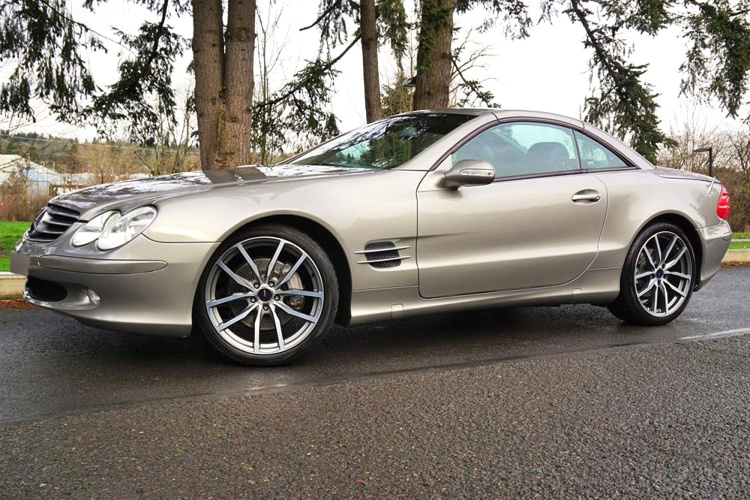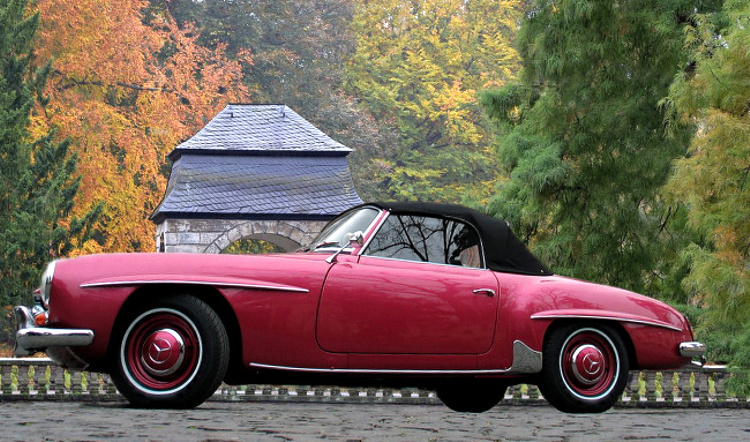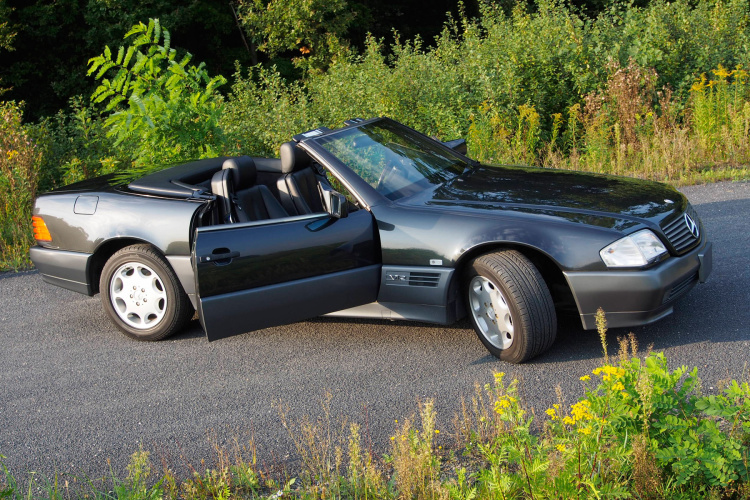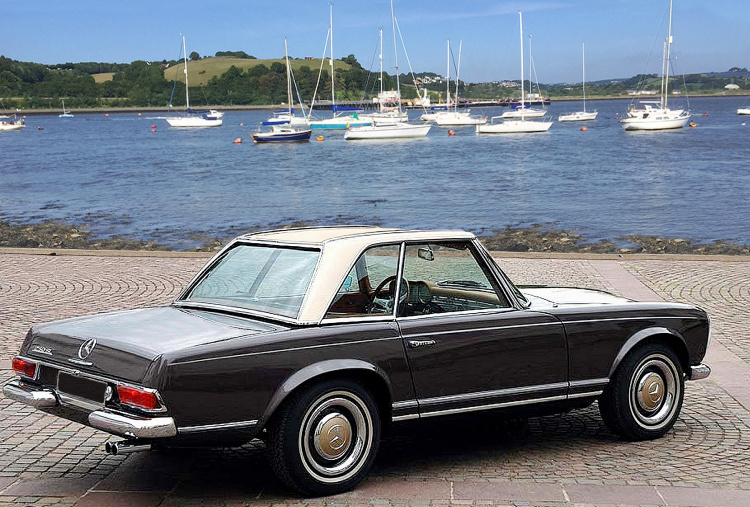Mercedes R107, the SL with the longest production run
Mercedes R107 SL: They called it the tank, they called it too Americanized, they called it anti-agile when it was unveiled to the press in 1971. Daimler-Benz managers were certainly not pleased to hear such comments from the international press.
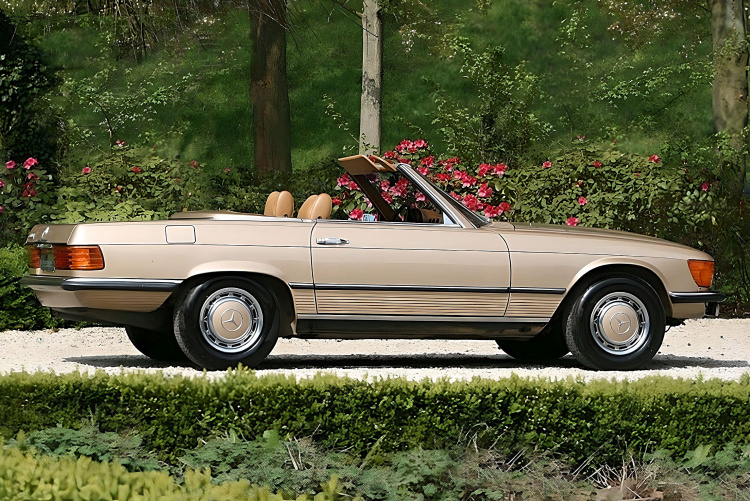
When the design process began in the mid-1960s, Karl Wilfert’s team could not work entirely in the vacuum of their own creativity. Tightening emission requirements combined with increasing safety regulations forced their creativity. The US market, with its appetite for comfort and luxury accessories, loomed large.
The timeless elegance and lightness of the W113 Pagoda was history. It had to give way to a heavier and less efficient roadster. It was also less sporty than the 300SL of the 1950s. The new SL weighed 1540 kg, almost 200 kg more than the Pagoda. Purists sensed a betrayal of the abbreviation SL. Originally it stood for “Super Light”.
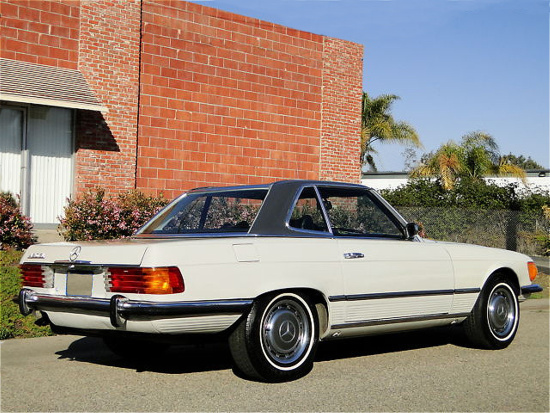
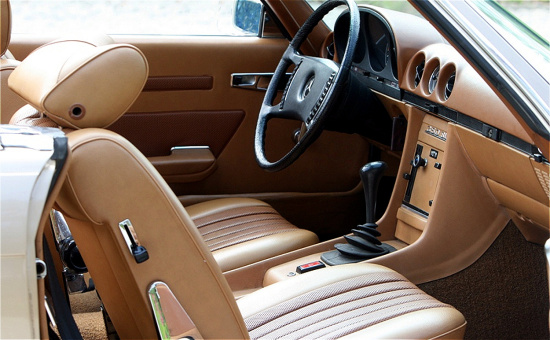
The Mercedes R107 was heavier than the W113
Maybe it was a bad idea to present it on a racetrack. If the testers had been allowed to drive on glamorous coastal roads instead, it might have been easier for them to say goodbye to the (supposedly better) old Mercedes Pagoda era.
To counteract the increased weight and improve refinement, Daimler-Benz specified its smooth 3.5-liter V-8 as standard for Europe. American SLs got the 4.5-liter enlargement after a short time, which emission controls made no more powerful but gave it more low rev torque.
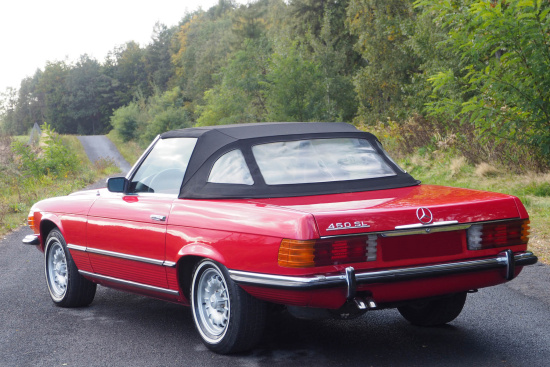
The US SL had small bumper horns
A four-headlamp treatment, instead of single flush-mounted lights, was adopted for the U.S. version. And protruding 5-mph “impact” bumpers, federally mandated, became standard in 1974.
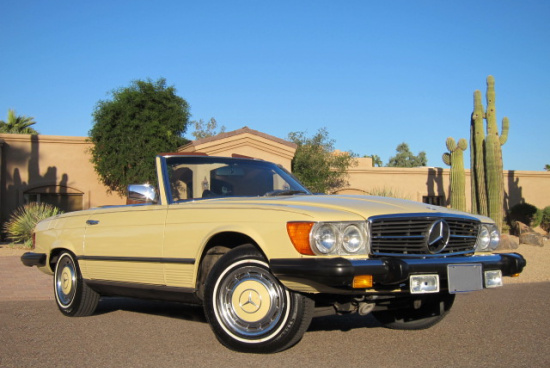
The new bumpers did not really help the looks of the car
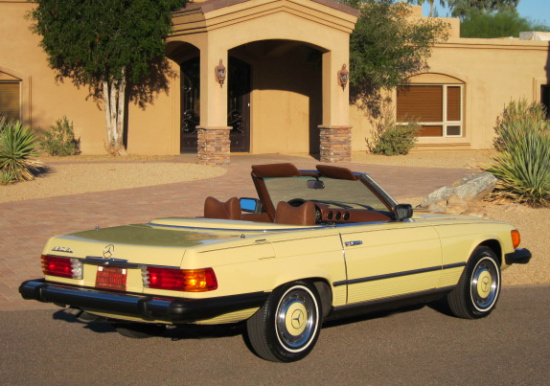
In the end, the purists and critical testers were proven wrong. The new car, despite its heaviness and Americanized body, worked. So gloriously in fact, that it lasted almost unchanged for nearly two decades, selling 287,237 units along the way.
Daimler-Benz never advocated change for its own sake. So with sales consistently strong, there was no need to tinker with this safe and solid sports tourer. It was timeless in its open-air appeal and always decently fast.
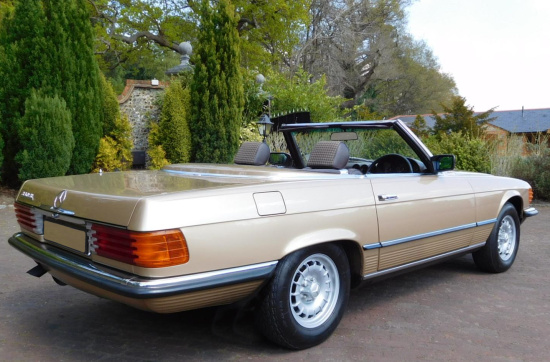
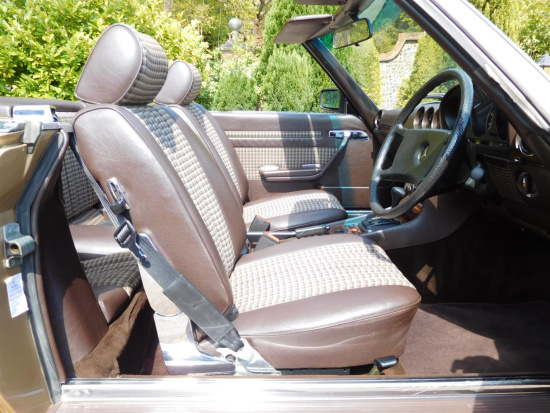
Fabric seats were in most European countries, incl. the UK, standard, even with the V8 models
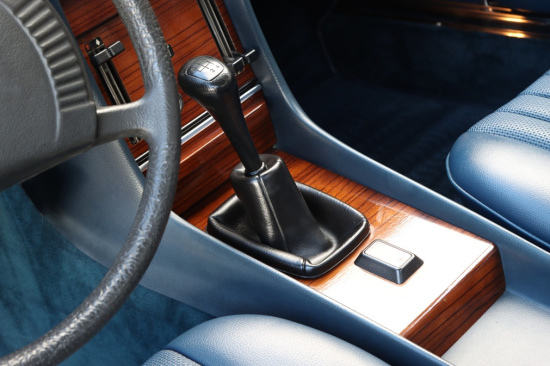
Also manual transmissions were still fairly common in Europe
The engines saw regular updates
When changes were needed, it was the engine that received the necessary attention. In Europe, for example, a 2.8-liter twin-cam six-cylinder version was added in 1974 as an energy crisis special. This lasted until 1985, when Daimler Benz replaced its new 3.0-liter sohc six with a new 300SL.
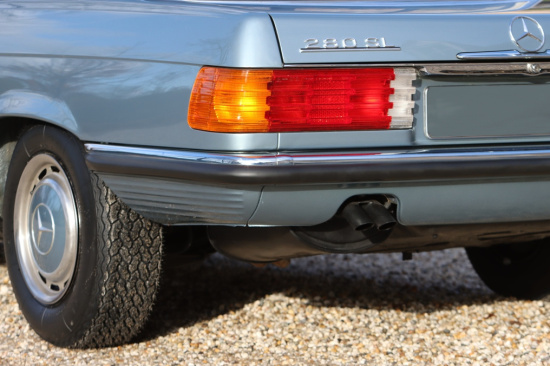
An exciting 500SL appeared for 1980 — just in time for the second world energy crisis. But over the years, inflation had pushed the Mercedes R107 SL into a rarefied price territory. Thus sales were hardly affected by a mere fuel shortage.
Around this time, the U.S. got a smaller version of this all-aluminum 5.0-liter V-8. It was the 1981 model 380SL. But its tame acceleration led to a “black market” demand for European 500SLs. That must have embarrassed MB of North America.
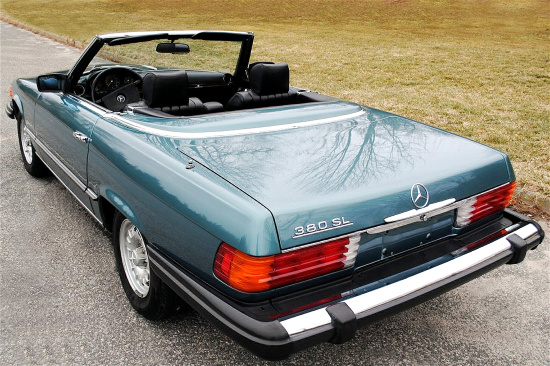
The Mercedes R107 received for selected markets a 5.6-Liter engine
This and an eventual oil glut prompted Stuttgart to develop a 5.6-liter replacement. It was a US, Australian and Japanese exclusive for 1986. Like the 500SL, it featured improved anti-dive/anti-squat control, Bosch anti-lock brakes, and a front chin spoiler. But it did not see a rear spoiler like the 500SL. Other goodies included a driver’s airbag, limited-slip differential, and upgraded trim and equipment. In Europe, a 420SL replaced the 3.8-liter as the mid-range offering.
After an almost unbelievable 18-year production from 1971 to 1989, it was finally time to say good bye to an SL icon. Its successor, the R129 looked vastly different.
In total, 237,286 units had been produced. The majority (156,440 or 65.9 %) were exported to the US. 15,123 or 6.4 % were rhd cars. Here is a sales breakdown by engine:
- 6-Cylinder cars
- 280SL: 25,436 (10.7 % of total R107)
- 300SL: 13,443 (5.7 %)
- Total 6-Cylinder cars: 38,879 (16.4 %)
- 8-Cylinder cars
- 350SL: 15,304 (6.4 %)
- 380SL: 53,200 (22.4 %)
- 420SL: 2,147 (0.9 %)
- 450SL: 66,298 (27.9 %)
- 500SL: 11,817 (5.0 %)
- 560SL: 49,641 (21.0 %)
- Total 8-Cylinder cars: 198,407 (83.6 %)
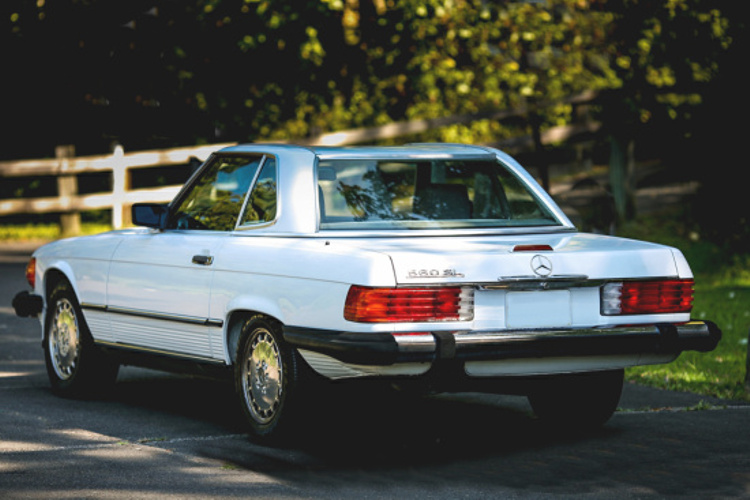
If you want to read more about the Mercedes R107 SL, its development and history, here you can buy the book and e-book. It comes with a comprehensive buyer’s guide and explains in detail the chassis number and data card. This link leads you to the US Amazon site, but the title is the same on Amazon sites in other countries. I am sure, you will enjoy the reading.

